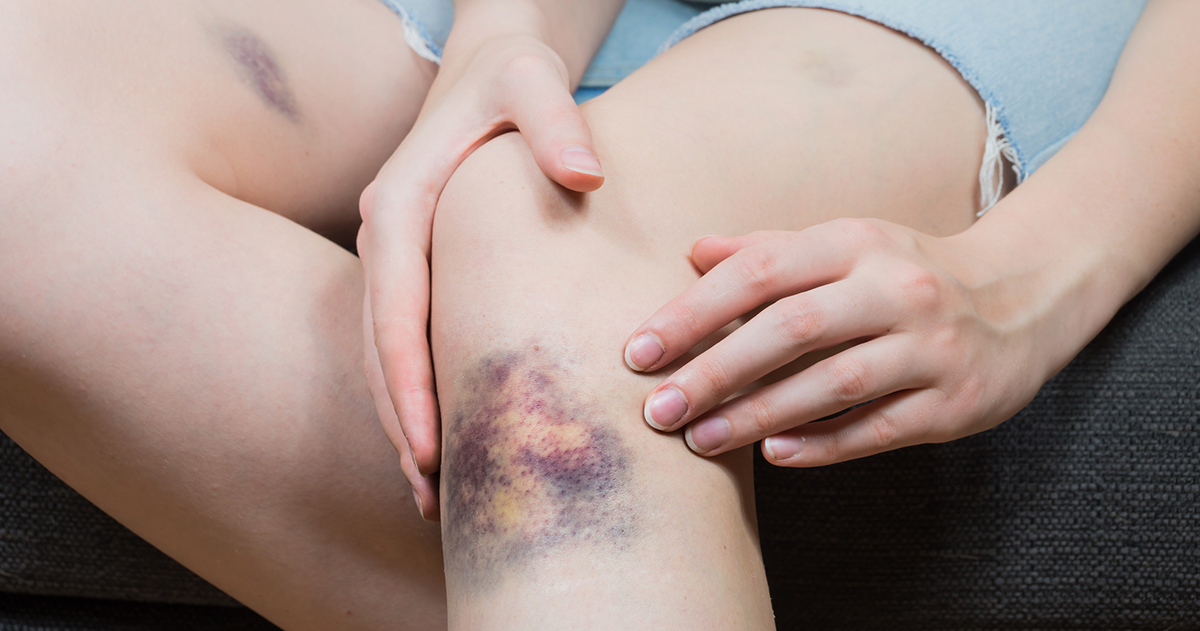Symptoms Of Hemophilia
Excessive Bruising

Excessive bruising remains a symptom of hemophilia. Also, if a person’s bruise takes longer than three weeks to heal completely, hemophilia may be indicated. Usually, a bruise happens when a body part is bumped or otherwise injured. First, the area of the skin becomes red, then turns a dark purple or blue. By the time the bruise begins to turn green and yellow, it remains nearly healed. Hemophiliacs bruise so quickly they may appear to bruise for no apparent reason. The blood vessels near the skin break and bleed and can’t stop soon due to a lack clotting ability in the blood. If you have frequent, excessive bruising which doesn’t heal, you’ll need to speak with your healthcare provider.
Get ready for the next symptom of hemophilia.
Joint Pain And Swelling

Hemarthrosis causes tingling, swelling, redness, and stiffness in the joint. If you have hemophilia, you may have these symptoms. While the symptoms feel like arthritis, they also can be a prime sign of hemophilia. Hemophiliacs whose blood doesn’t clot may experience bleeding into the joints that cause joint pain and swelling one or two times per week. If your family's medical history includes a history of hemophilia, tell your doctor. They may perform a synovial fluid analysis to determine the cause of your joint discomfort. Your doctor will take a small sample of the fluid in your joints and have it tested. They may also conduct a blood test for the clotting factor in your system. After your health care provider determines whether you have hemophilia or not, they can start reducing your joint swelling and pain.
Continue to learn about the symptom that appears following vaccinations.
